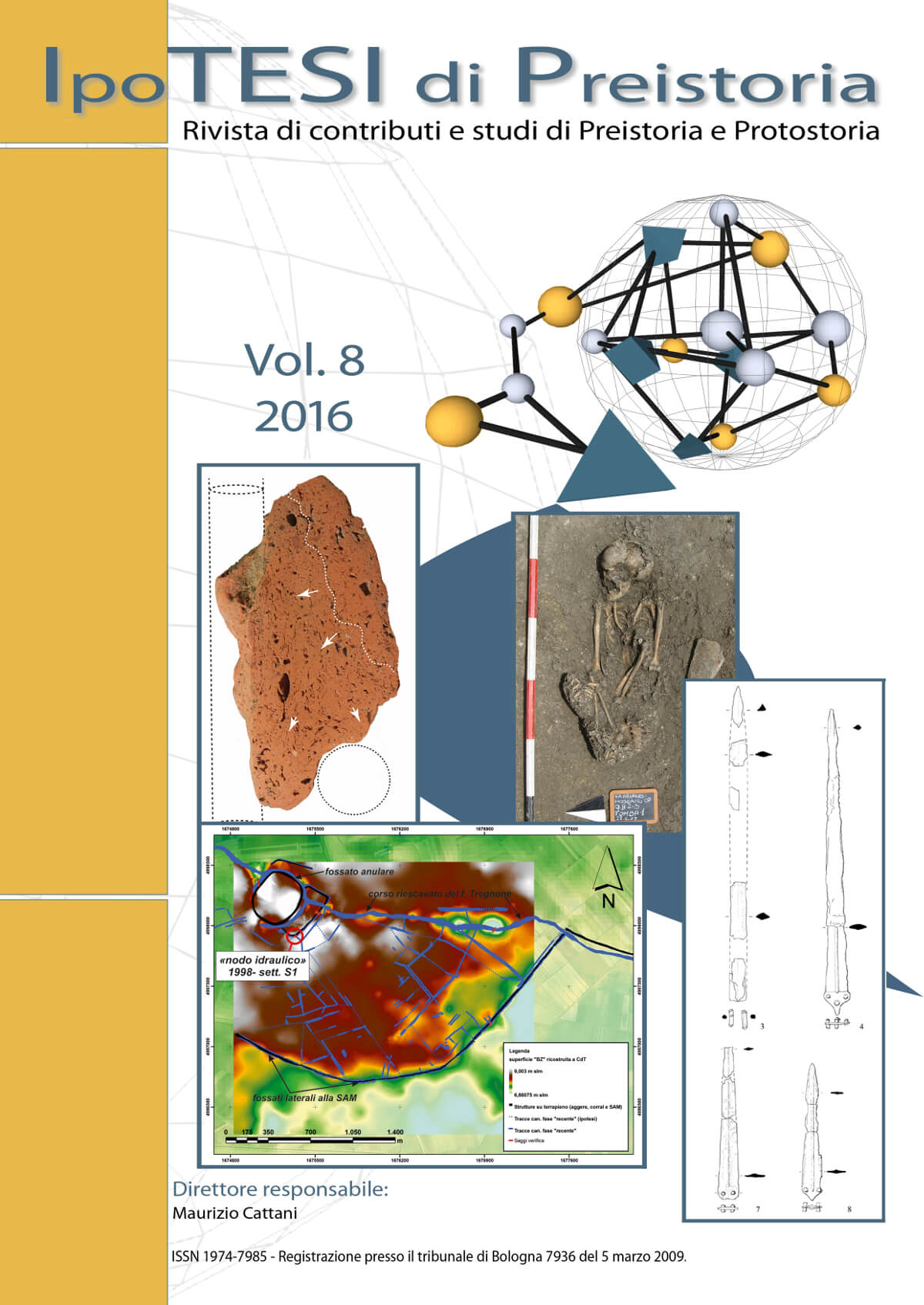The technological analysis of earthen architectural remains: the variability of building techniques and the characterization of burned or cemented daub in polished section
DOI:
https://doi.org/10.6092/issn.1974-7985/6503Keywords:
Earthen architecture, fired daub, conglomerate, technological analysis, methodologyAbstract
Earthen architectural fragments (burned or cemented) are often collected during the excavation in Italian prehistoric and protohistoric sites. The technological characterization of these remains is relevant to recognize the existence of local or regional building traditions and to understand the exploitation of raw materials and, more in general, the ancient production strategies. In addition to the current macroscopic analysis (morphology of fragments and classification of pastes) and before the realization of archaeometric analysis, it’s possible to complete the analytical protocol of daub with some observations in polished section. To realize a polished section, the daub sample is cut and the resulting section is polished with sandpaper. The realization of this kind of section allows a better description of the arrangement of the constituents, to identify the processes of transformation and deformation of raw materials during the building activity. The aim of these mesoscopic analysis is to characterize the behavioral chain referred to the processing of raw materials and their installation, linking the observed characteristics to specific actions. It’s possible to obtain some functional data about the original function of the earthen structures or the dynamics of entrance in the archaeological record a well. This paper presents some case-studies and some preliminary keys to understand the features observed in polished section. The use of this analytical technique gives some encouraging results, especially in comparing the number of relevant data to the low cost of production of a polished section.Downloads
Published
2016-12-21
How to Cite
Peinetti, A. (2016). The technological analysis of earthen architectural remains: the variability of building techniques and the characterization of burned or cemented daub in polished section. IpoTesi Di Preistoria, 8(1), 103–138. https://doi.org/10.6092/issn.1974-7985/6503
Issue
Section
Papers
License
Copyright (c) 2016 Alessandro Peinetti
Copyright for articles published in this journal is retained by the authors, with first publication rights granted to the journal. The authors agree when submitting their work that it can be copied by anyone for noncommercial purposes but only if proper credit is given. Thus by virtue of their appearance in this open access journal, the articles have been declared free to use, with proper attribution, in noncommercial settings. All authors are responsible for the content of their work, including proper citation, attribution and usage permissions.
This journal is licensed under a Creative Commons Attribution NonCommercial 4.0 International License.
See also our Open Access Policy.
See also our Open Access Policy.





